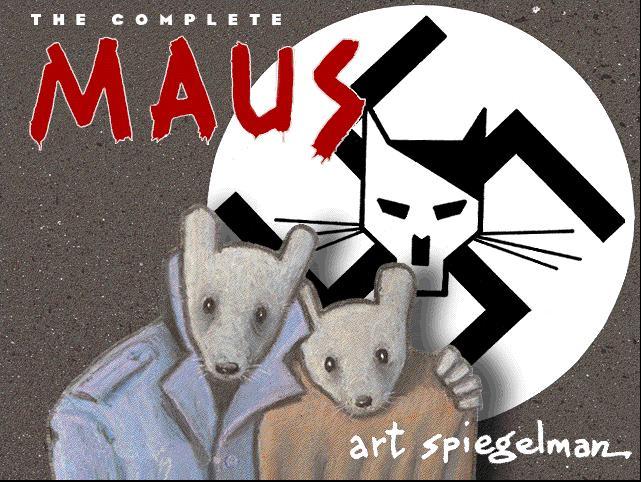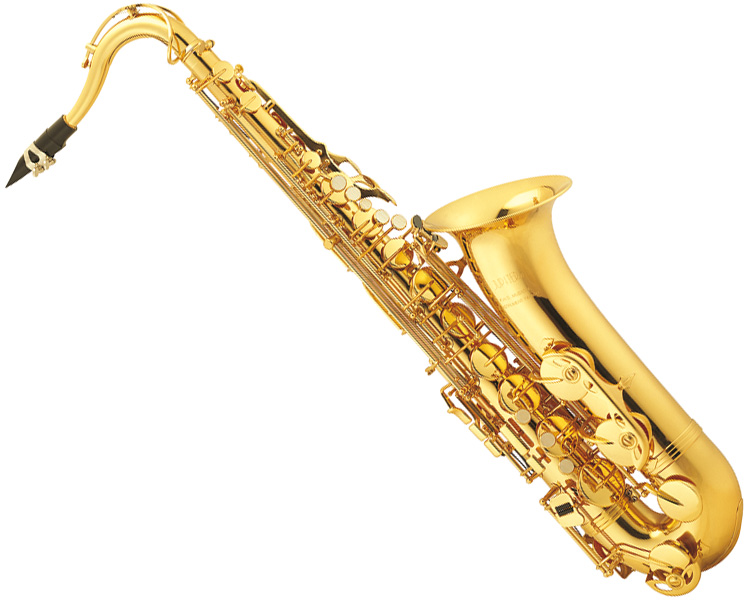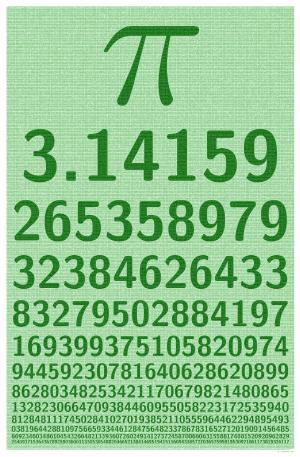Diversity is any kind of variety that makes our world a better place.
The Pulitzer Prize is one of the most prestigious awards that a journalist or writer can receive. On this week in 1982, the Pulitzer Prize committee made an historic decision—to recognize a comic book as a literary work. Art Spiegelman received a Pulitzer Prize for his comic book series Maus: A Survivor’s Tale.
Part of what makes Maus such an extraordinary work of literature is the manner in which it reveals the power of comics to convey the essence of a story in its own original way—in this case, the horrors and complexities of the Nazi Holocaust. The critical acclaim of Maus helped to shatter preconceived notions about comics, and paved the way for an entire generation of graphic novel artists and their followers, like many of you.
Remember, you don’t have to travel as far as the offices of the Pulitzer Prize to find diversity. There are hundreds of opportunities to celebrate diversity right here at your own school. Find one today!
The Diversity Download
For schools that are passionate about diversity.
Week 30: Jazz
Diversity is any kind of variety that makes our world a better place.
Jazz music is one of the few art forms that is genuinely American. Some of the unique characteristics that help to define Jazz include the rhythmic interaction between the performers, the freedom to improvise, and the way in which the personality of the performer expresses itself through the music and vice-versa.
Jazz is always associated first with New Orleans, Louisiana. But believe it or not, the earliest known reference to the word “jazz” came from Portland, Oregon! During this week in 1912, a sports reporter from the Los Angeles Times wrote about a pitcher from the Portland Beavers baseball team, who said, “I’ve got a new curve this year. I call it the Jazz ball because it wobbles and you simply can't do anything with it.” The name first became associated with the music three years later in Chicago, even though the music itself had been played in New Orleans prior to that.
Remember, you don’t have to travel as far as New Orleans, Louisiana or Portland, Oregon to find diversity. There are hundreds of opportunities to celebrate diversity right here at your own school. Find one today!
Jazz music is one of the few art forms that is genuinely American. Some of the unique characteristics that help to define Jazz include the rhythmic interaction between the performers, the freedom to improvise, and the way in which the personality of the performer expresses itself through the music and vice-versa.
Jazz is always associated first with New Orleans, Louisiana. But believe it or not, the earliest known reference to the word “jazz” came from Portland, Oregon! During this week in 1912, a sports reporter from the Los Angeles Times wrote about a pitcher from the Portland Beavers baseball team, who said, “I’ve got a new curve this year. I call it the Jazz ball because it wobbles and you simply can't do anything with it.” The name first became associated with the music three years later in Chicago, even though the music itself had been played in New Orleans prior to that.
Remember, you don’t have to travel as far as New Orleans, Louisiana or Portland, Oregon to find diversity. There are hundreds of opportunities to celebrate diversity right here at your own school. Find one today!
Week 29: Persian New Year (Nowruz)
Diversity is any kind of variety that makes our world a better place.
This week Persians around the world are celebrating Persian New Year. Before the new year arrived, Persian families were busy cleaning out their homes. They also purchased new clothes with which to greet the start of the new year. During the course of the 12 day-long celebration, Persians will visit family members, especially their family elders.
Incidentally, it is important to understand that Persians and Arabs are not the same. Though they are both associated with the religion of Islam, they are ethnically different. Persians live primarily in Iran and Afghanistan and are of an Indo-European background. Arabs primarily live in the region stretching from North Africa to Iraq, and are identified as Semitic.
In short, Persians have their own unique culture, history, and language, and Arabs have theirs as well. Like all people, they are proud of their respective heritages, so if you ever get confused between the two, just ask them—you’ll probably find that they’re happy to explain.
Remember, you don’t have to travel as far as Iran or Afghanistan to find diversity. There are hundreds of opportunities to celebrate diversity right here at your own school. Find one today!
This week Persians around the world are celebrating Persian New Year. Before the new year arrived, Persian families were busy cleaning out their homes. They also purchased new clothes with which to greet the start of the new year. During the course of the 12 day-long celebration, Persians will visit family members, especially their family elders.
Incidentally, it is important to understand that Persians and Arabs are not the same. Though they are both associated with the religion of Islam, they are ethnically different. Persians live primarily in Iran and Afghanistan and are of an Indo-European background. Arabs primarily live in the region stretching from North Africa to Iraq, and are identified as Semitic.
In short, Persians have their own unique culture, history, and language, and Arabs have theirs as well. Like all people, they are proud of their respective heritages, so if you ever get confused between the two, just ask them—you’ll probably find that they’re happy to explain.
Remember, you don’t have to travel as far as Iran or Afghanistan to find diversity. There are hundreds of opportunities to celebrate diversity right here at your own school. Find one today!
Week 28: Pi
Diversity is any kind of variety that makes our world a better place.
Did you know that March 14 is a holiday called “Pi Day”? No, we’re not celebrating the kind of pies that your grandma makes. We’re celebrating the kind of pi’s you find in your math class. In numerical form, March 14 is “Three Fourteen.” And 3.14 are the first digits in that amazing number called “Pi” that goes on and on forever.
The first evidence of mankind’s understanding of Pi comes from studying the design of the great pyramids of Ancient Egypt. Pi represents the relationship between a circle’s diameter and its circumference. In other words, no matter how small or large a circle is, its circumference is always 3.14 times as long as its diameter. Pi, therefore, is a constant, or a number that never changes.
Like circles, people come in many shapes and sizes, and we have various talents and abilities. And like Pi, we too share certain constants. We all need to be loved and respected. We all want to succeed.
Remember, you don’t have to travel as far as the pyramids of Egypt to find diversity. There are hundreds of opportunities to celebrate diversity right here at your own school. Find one today!
Did you know that March 14 is a holiday called “Pi Day”? No, we’re not celebrating the kind of pies that your grandma makes. We’re celebrating the kind of pi’s you find in your math class. In numerical form, March 14 is “Three Fourteen.” And 3.14 are the first digits in that amazing number called “Pi” that goes on and on forever.
The first evidence of mankind’s understanding of Pi comes from studying the design of the great pyramids of Ancient Egypt. Pi represents the relationship between a circle’s diameter and its circumference. In other words, no matter how small or large a circle is, its circumference is always 3.14 times as long as its diameter. Pi, therefore, is a constant, or a number that never changes.
Like circles, people come in many shapes and sizes, and we have various talents and abilities. And like Pi, we too share certain constants. We all need to be loved and respected. We all want to succeed.
Remember, you don’t have to travel as far as the pyramids of Egypt to find diversity. There are hundreds of opportunities to celebrate diversity right here at your own school. Find one today!
Week 27: the World Wide Web
Diversity is any kind of variety that makes our world a better place. This week, we are celebrating the birthdate of the Internet and more importantly the reason it was born. The key feature of the Internet is being able to click on a link to access information or documents across a network. This system, now called the World Wide Web (or “www” for short) was first proposed this week in 1989, by a British computer scientist named Timothy Berners-Lee.
Scientists are part of a community, and Berners-Lee wanted to find a better way for scientists to share information with each other so they could assist each other in their research. In other words, the ideas of sharing and helping were the original basis of the Internet. The same values of sharing and helping also lie at the core of diversity too. Make sharing and helping a part of the way you interact with your fellow classmates.
Remember, you don’t have to travel as far as the World Wide Web to find diversity. There are hundreds of opportunities to celebrate diversity right here at your own school. Find one today!
Scientists are part of a community, and Berners-Lee wanted to find a better way for scientists to share information with each other so they could assist each other in their research. In other words, the ideas of sharing and helping were the original basis of the Internet. The same values of sharing and helping also lie at the core of diversity too. Make sharing and helping a part of the way you interact with your fellow classmates.
Remember, you don’t have to travel as far as the World Wide Web to find diversity. There are hundreds of opportunities to celebrate diversity right here at your own school. Find one today!
Week 26: Michelangelo
Diversity is any kind of variety that makes our world a better place.
Michelangelo is considered to be among the greatest artists ever produced by Western Civilization. His most famous work is his portrayal of 50 scenes and figures which he painted across the enormous ceiling surface of the Sistine Chapel in Rome. He was born this week, in Tuscany, Italy, in 1475.
Michelangelo lived at a time when apprenticeships were a common form of education and training. Michelangelo himself began his series of apprenticeships at the age of 13. At their most basic level, apprenticeships involve learning a skill from an expert.
In our modern world, apprenticeships have been replaced by schooling. However, it is still important to honor and appreciate the kind of learning that is transmitted directly from one person to another. Re-building an engine, knitting blankets, raising horses. When you take the time to learn specialized skills like these from someone, you are tapping into one of the oldest forms of learning—just like Michelangelo centuries ago.
Remember, you don’t have to travel as far as Tuscany, Italy to find diversity. There are hundreds of opportunities to celebrate diversity right here at your own school. Find one today!
Week 25: The Internment of Japanese-Americans
Diversity is any kind of variety that makes our world a better place. Today we shine a spotlight on a tremendous act of courage during a time of national hysteria.
This week in 1942, during World War II, President Roosevelt signed a Presidential order that resulted in every Japanese-American citizen living along the West Coast to be forced out of their homes without cause, and relocated into internment camps located in various isolated locations.
As part of the process a Congressional committee traveled to Los Angeles, San Francisco, Portland, and Seattle to collect the comments of Americans towards their Japanese-American neighbors. The public mood everywhere was overwhelmingly anti-Japanese. But the hearings in Portland stood out because it was the only city without any organized protest against the President's actions. In fact, only one person stood up to publicly support the Japanese-Americans in front of the committee. Her name was Azalia Peet from the city of Gresham. Far beyond appreciating diversity, Ms. Peet risked her life to state the truth when no one wanted to hear it.
Remember, you don't have to travel as far as Gresham, Oregon to find diversity. There are hundreds of opportunities to celebrate diversity right here at your own school. Find one today!
Week 24: The Sahara Desert
Diversity is any kind of variety that makes our world a better place.
There is no recorded memory of snow ever falling in the Sahara Desert—except for on one occasion, this week in 1979. The snow storm occurred in Southern Algeria although the snow disappeared within hours.
Believe it or not, there was a time during the Stone Age when the Sahara was wet, green, and habitable. Scientists know this because they have uncovered a massive burial ground with the skeletal remains of humans and hundreds of animals including antelopes, giraffes, hippos, turtles, and clams. The Earth is diverse at any given time, but we can learn from the Sahara Desert that it is also diverse across time as well—things can and will change.
Remember that this is also true for people as well. When you appreciate diversity among the people around you, you are also appreciating the fact that people can and do change.
Remember, you don’t have to travel as far as the Sahara Desert to find diversity. There are hundreds of opportunities to celebrate diversity right here at your own school. Find one today!
Week 23: The Amazon River Basin
Diversity is any kind of variety that makes our world a better place.
We all know that water flows from rivers into the oceans, right? Well nature always seems to have a way of surprising us. In a few places around the world, there are times in the year when water flows backwards from the ocean up a river. The phenomenon is called a tidal bore, and one of the most spectacular tidal bores is occurring right now in Brazil, at the mouth of the Amazon river. Waves reaching up to 12 feet high have been known to flow as far as 7 miles upstream.
The Amazon River is amazing for many other reasons. It contains more water than the next ten largest rivers combined. And ten percent of all known species in the world live in the Amazon Basin Rain Forest. An ecosystem that enormous has a huge impact on the environmental health of the world. It’s no wonder that there are so many organizations large and small who are trying to preserve the diversity of life in the Amazon rain forests.
Remember, you don’t have to travel as far as the Amazon River to find diversity. There are hundreds of opportunities to celebrate diversity right here at your own school. Find one today!
Week 22: History of Fractions
Diversity is any kind of variety that makes our world a better place.
This week we can talk about a milestone that is truly worth celebrating—we are half-way through the school year. Now what do you think about that? And by “that” I mean the fraction one-half.
We often think of cavemen counting rocks or sticks, but those are whole numbers. So when did fractions first appear in mankind’s history? The fraction that is familiar to us today with a numerator, horizontal bar, and denominator was first developed by an Arab mathematician from North Africa during the 12th century. But Egyptians from as early as 1800 B.C. had their own notation for fractions that was based in hieroglyphic pictures.
Fractions can be tedious, what with common denominators and reducing and all. But would you honestly prefer a world without fractions? After all, if we didn’t understand fractions, we’d be thinking that there was still a whole year of school left.
Remember, you don’t have to travel as far as North Africa and Egypt to find diversity. There are hundreds of opportunities to celebrate diversity right here at your own school. Find one today!
This week we can talk about a milestone that is truly worth celebrating—we are half-way through the school year. Now what do you think about that? And by “that” I mean the fraction one-half.
We often think of cavemen counting rocks or sticks, but those are whole numbers. So when did fractions first appear in mankind’s history? The fraction that is familiar to us today with a numerator, horizontal bar, and denominator was first developed by an Arab mathematician from North Africa during the 12th century. But Egyptians from as early as 1800 B.C. had their own notation for fractions that was based in hieroglyphic pictures.
Fractions can be tedious, what with common denominators and reducing and all. But would you honestly prefer a world without fractions? After all, if we didn’t understand fractions, we’d be thinking that there was still a whole year of school left.
Remember, you don’t have to travel as far as North Africa and Egypt to find diversity. There are hundreds of opportunities to celebrate diversity right here at your own school. Find one today!
Subscribe to:
Posts (Atom)








